It is already the hot, latter half of the Berlin Summer – the part where you weigh the joy of bathing in the lake against the crowds; the part where your houseplants will dry out if they’re forgotten. I came back from New York in March with only half of a plan, and have since been working on hobbies, side projects, and language skills, all without a lot of consistency.
I have, with consistency, been walking along the Landwehr Canal. My apartment is on the kind of street which is only a thoroughfare and never a destination – it’s taxi associations, a massage parlour, a drink store. But cross the intersection – the traffic lights have been under repair for more than a year now – and walk across that oddly triangular park which sometimes has squirrels, and you’ll arrive at the Landwehr Canal.
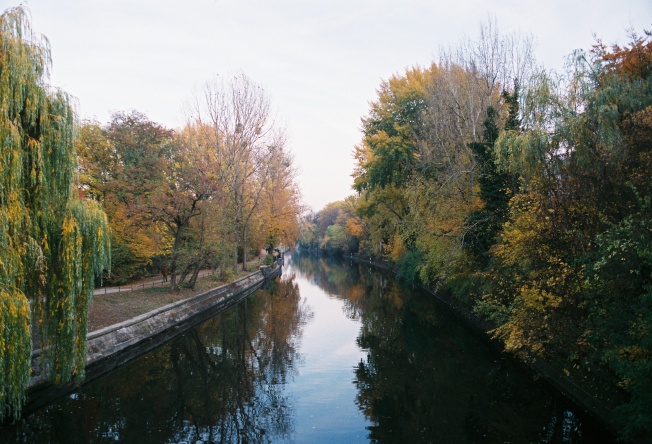
The Landwehr Canal from the Waterloo Brücke, Autumn 2018
It’s a nice place. You wouldn’t want to swim there, but row an inflatable boat down it, with friends, a bottle of wine and a ukulele? Definitely.
I’ve been walking along the shores of this canal since I moved into this apartment, 4 years ago. But somehow, this is the first time where I’ve had the space and capacity to really observe it.
Things change over the course of the seasons. The colors – everything in spring starts a vivid green, then as summer comes, the green turns deeper, and then all the horse-chestnuts bloom in huge pink / white clusters, like upside-down bunches of grapes, then all the petals fall off into the canal. As the summer progresses, the maples start seeding, and you get this glorious citrus-colored fringing around the base of their canopies. By now – late-summer – the oaks have grown their acorns to about three quarters of the size they will be when they fall. You can tell what day of the year it is from the trees on the canal, if you’re paying enough attention.
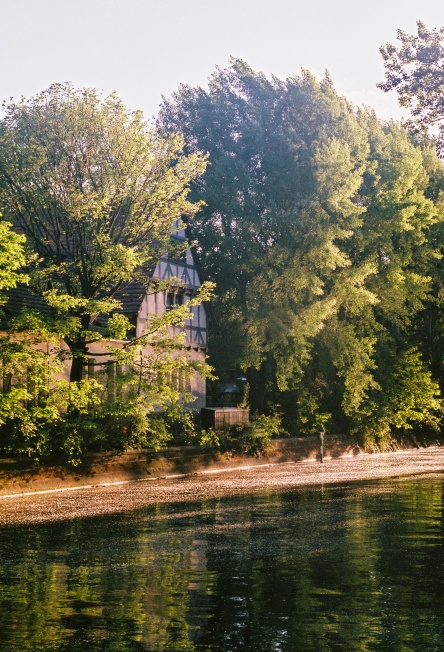
The Old Toll House, and petals on the water.
This isn’t really a story about the seasons, though. It’s a story about the Willows.
Spring 2020 found me walking frequently along the canal, courtesy of lockdown, partial employment, and the location of my favourite bakery. And sitting on the banks on the way back, watching, eating Zimtschnecken. One day, I noticed that the leaves on the willow on the bank opposite hung almost all the way to the water and then abruptly stopped:
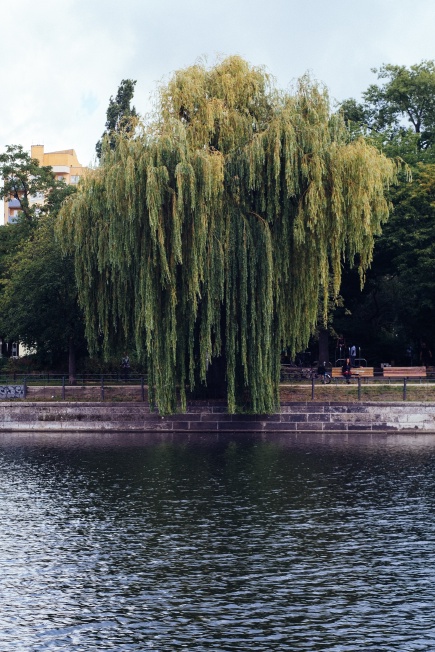
Almost as if it has a quarantine fringe.
But it wasn’t (isn’t!) just that one willow. It’s also this one:
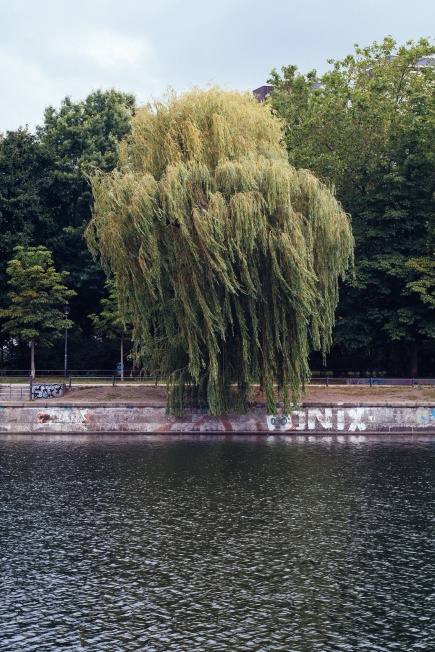
And once you’ve seen it twice, you see it everywhere:
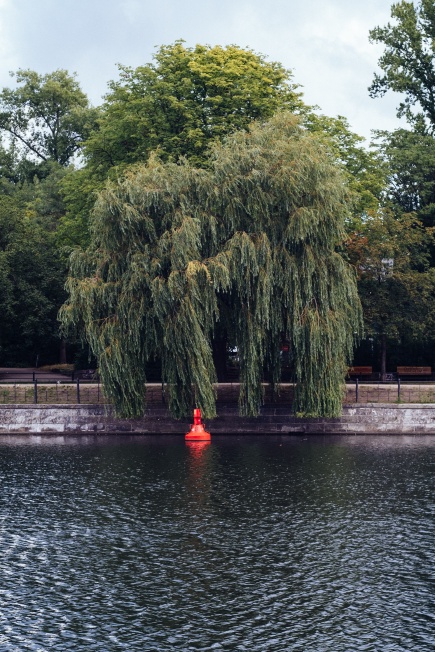
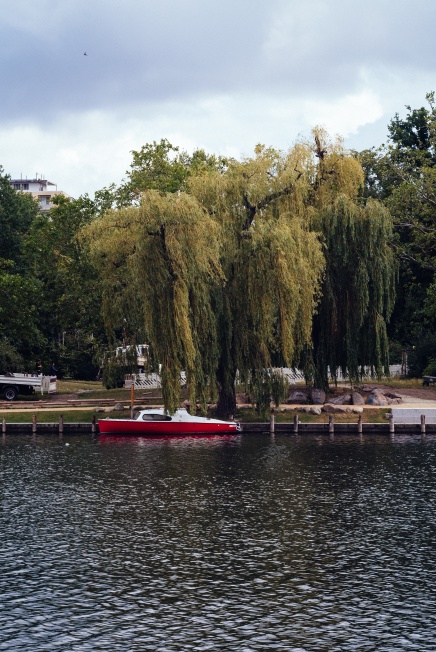
By this point, it’s clear that it’s not a coincidence. How do they know to stop growing before they get to water?
- Can they sense the moisture in the air as they draw close?
- Is it a timing thing? Do all the branches grow at exactly the same speed somehow, and I’m observing them at exactly the right time?
- Does someone come along in a boat periodically and trim them, for tree health or to prevent them from polluting the river?
Google knows nothing.
I put the question to my friends. Eventually, Nana says
“it’s the swans”.
And it’s suddenly clear, though I have to admit my surprise that swans don’t subsist on a diet of bread and stolen picnic items. The willows all hang to exactly the height of the tallest swan.
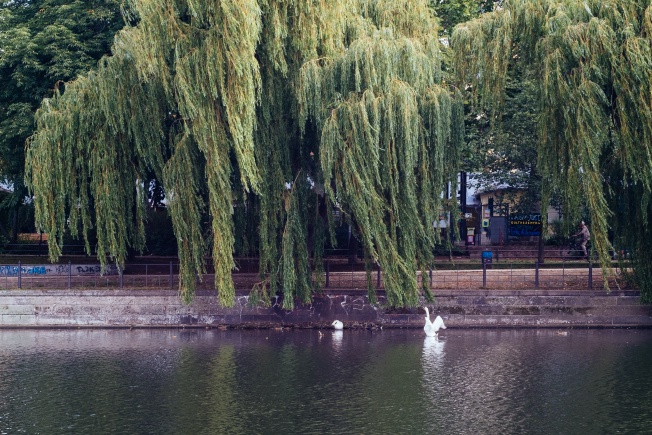
Mysteries are rarely more mundane than this. But they are also rarely more joyful; I’ve become privy to a deep secret through aimless, but continuous, attention. There is something sacred in the everyday.